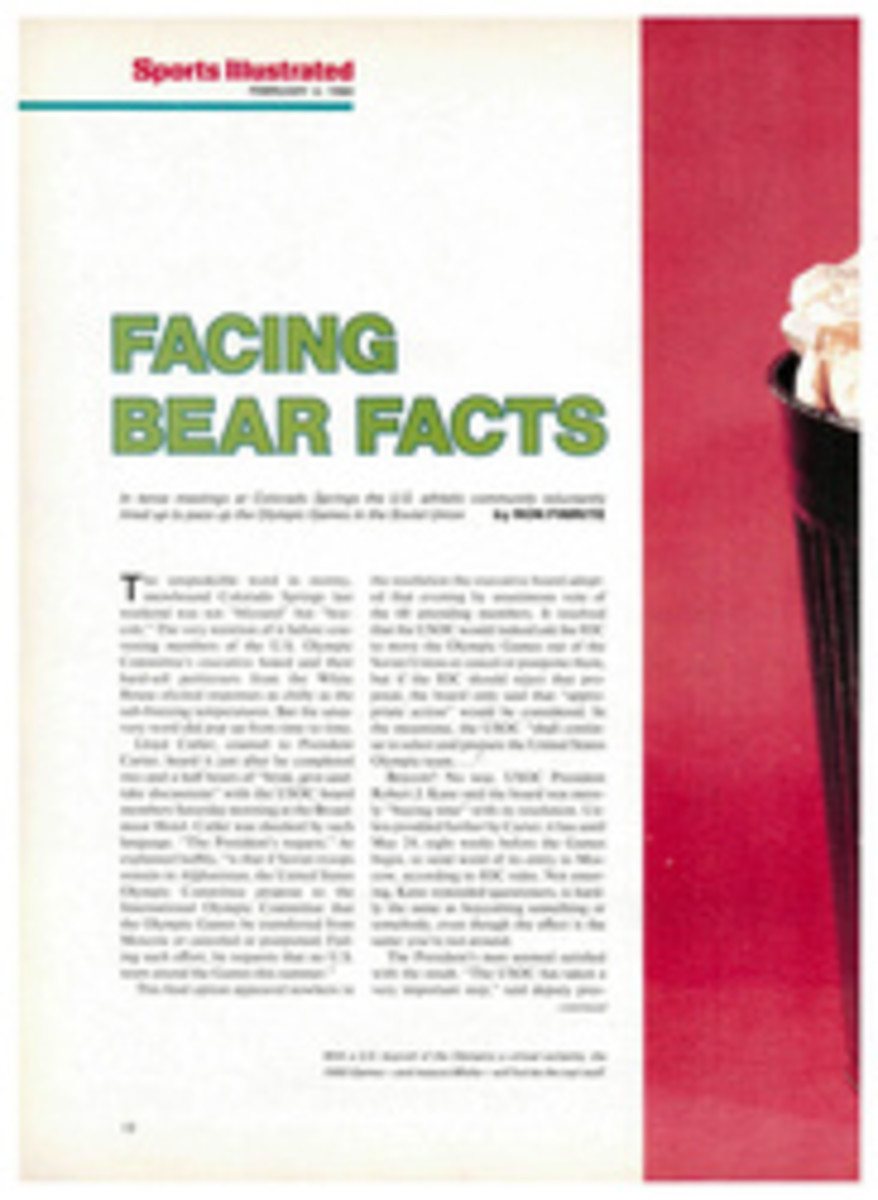
FOR A SEASONED ANGLER, WINTER FLY FISHING IS SPORT TO WARM THE HEART
It's taken a while—half my life or thereabouts, provided my luck and health hold out—but I've finally found a kind of fishing that suits my tastes perfectly. I think that those of us who love to fish are born to it, that the very first time we are taken to a pond or creek the excitement and mystery take hold, and they never let go. It was that way with me. From the age of 10, wherever I've been I've tried the available fishing, and every variety of the sport has had its attractions. Until recently, though, there have always been drawbacks, too.
Spearfishing in Hawaii—then later in the Mediterranean and off the Florida Keys—was both physically demanding and visually stimulating. Six or eight hours in the water was a satisfying workout, and every day the sea would show you much that was lovely and probably something that was new, strange or dangerous. The drawback was the spearing. Shooting a metal shaft through a fish just wasn't much fun.
No form of bait fishing was ever very appealing to me, either. I tried it with large worms in a muddy Bavarian trout stream, with salmon eggs in a High Sierras lake. It was messy, especially the worms, and the fish you caught would usually take the hooks down into their stomachs, making release impossible, or at best awfully difficult.
I've also been through the tiny-dry-flies-for-highly-selective-trout ordeal. There is no denying the challenge in such fishing, but at least 50 minutes of every hour on the stream are spent tying leader tippets, changing flies (as from a No. 18 to a 22), figuring strategy, then crawling up and down the banks on hands and knees to implement it. When I go fishing I like to fish.
Deep-sea trolling offered intense excitement for the first fish or two. But when the initial excitement wore off, all that was left was a test of strength, a drawn-out tug-of-war.
Surf casting is different from trolling in that, instead of sitting and waiting, you stand and wait. And I've never been able to overcome a feeling of utter hopelessness at tossing a bait or lure from a beach into something as large as the sea.
The Pacific Northwest, where I live now, offered me salmon, steelhead and trout. I tried them all, and it didn't take long to choose steelhead as the most attractive. They are magnificent game fish—large enough, wild fighters, inhabitants of beautiful streams, and willing, sometimes, to take a well-presented fly. The trouble became one of numbers—numbers of people, that is. Good summer steelhead rivers are always mobbed.
All this, then, led to winter fishing. There are far more coastal rivers with winter-run steelhead than there are with summer runs, although plenty of people fish for winter steelhead, too, and nearly all of them use bait—sticky gobs of salmon eggs wrapped up in cheesecloth.
In time I realized that there was only one way I could ever hope to have a river with steelhead in it pretty much to myself. I would have to fish the cold days between coastal storms, with the water low and clear. Low, clear water doesn't appeal to bait fishermen. Their heavy lines and lead sinkers spook the fish. Cold water doesn't appeal to any fishermen, for steelhead are thought to be inactive when water temperatures fall to the middle 30s and below.
As I prepared to test this theory, the clear water didn't worry me much, because I'd be casting flies on a six-pound leader tippet. But I had my doubts about whether a fish could be coaxed up off the bottom to chase a fly through ice water. Another question was whether I could find fish in relatively shallow spots. Deep, slow pools aren't much fun to explore with flies. I would be looking for ledges, slots and large rocks along the riffles, and slicks above rapids where the current spread and slowed.
Well, the results of such fishing elated me, and the possibilities seemed to expand each year. For a while I thought that water under 38° was hopeless, but then I caught a six-pound steelhead in 31° water, water so cold that only its movement prevented its turning to ice.
I started out with a fast-sinking fly line, but now I use a slow sinker, or even my floating summer line when the air gets up to 40°. It doesn't seem to make sense, but warm air will bring fish up through cold water. One February afternoon—air 45° and water 33°—11 steelhead rose for flies that were barely beneath the surface.
Winter fly fishing isn't often so productive, though, and that's just fine, because easy fishing soon becomes the most boring kind of all. A steelhead a day is an admirable average, and though there are occasional great days, there are far more empty ones. But rivers on winter days are truly lovely—water as clear as the air, deer prints frozen into the sand along the banks, wood duck, mallard and mergansers flying so low you hear their wings cut through the air.
I do meet occasional fishermen on my winter steelhead days, usually fly fishermen, who are abroad for the same reasons I am. I've never objected to company, only to crowds. Sometimes a drift boat will pass by, and in it will be two or three men with bait-casting or spinning rods, wearing down jackets, blowing on their frozen hands.
It does get cold out there, sometimes painfully so. But discomfort, too, becomes a blessing. It is on the coldest days that the after-fishing drink by a fire of well-seasoned madrona is most satisfying.
ILLUSTRATION

